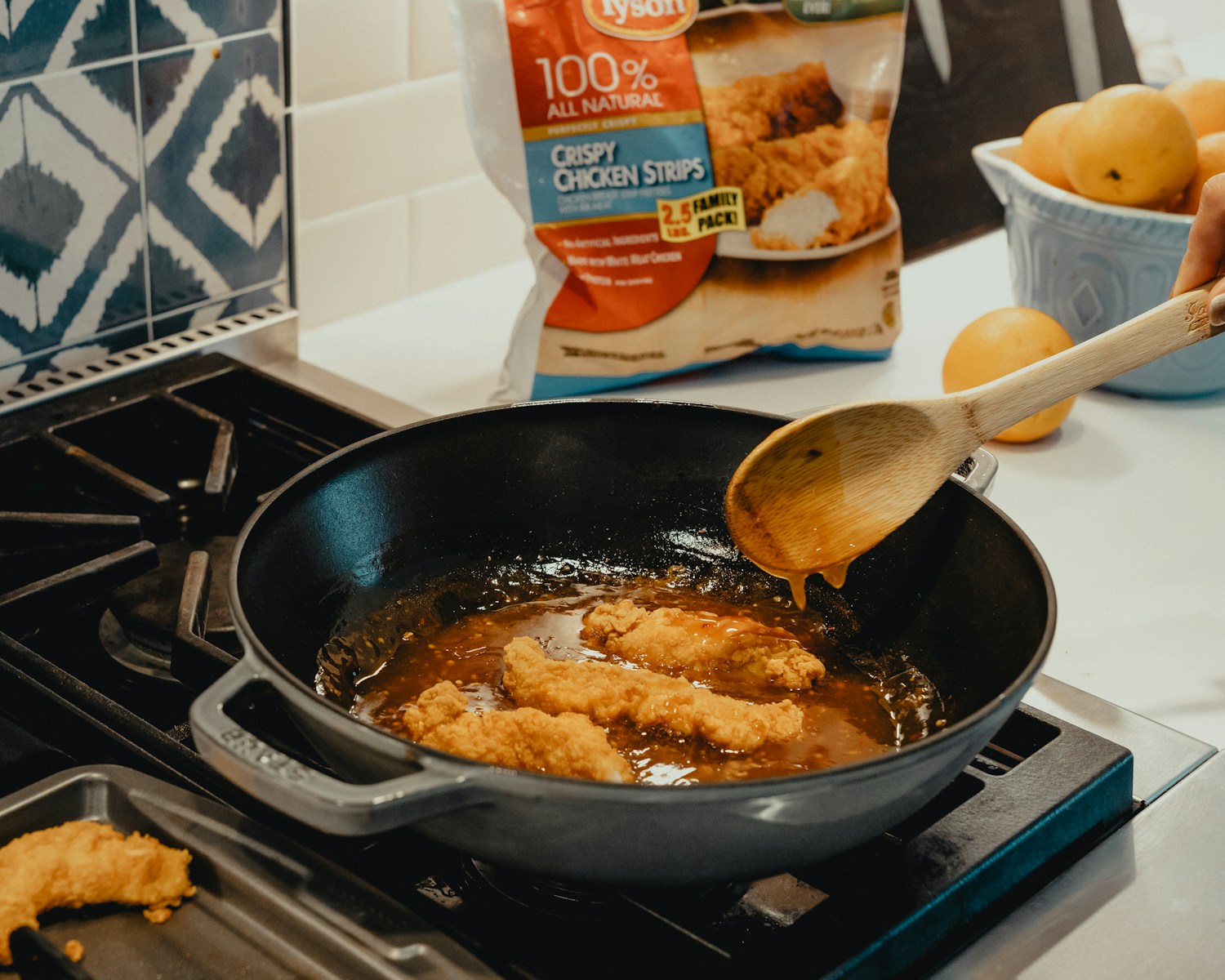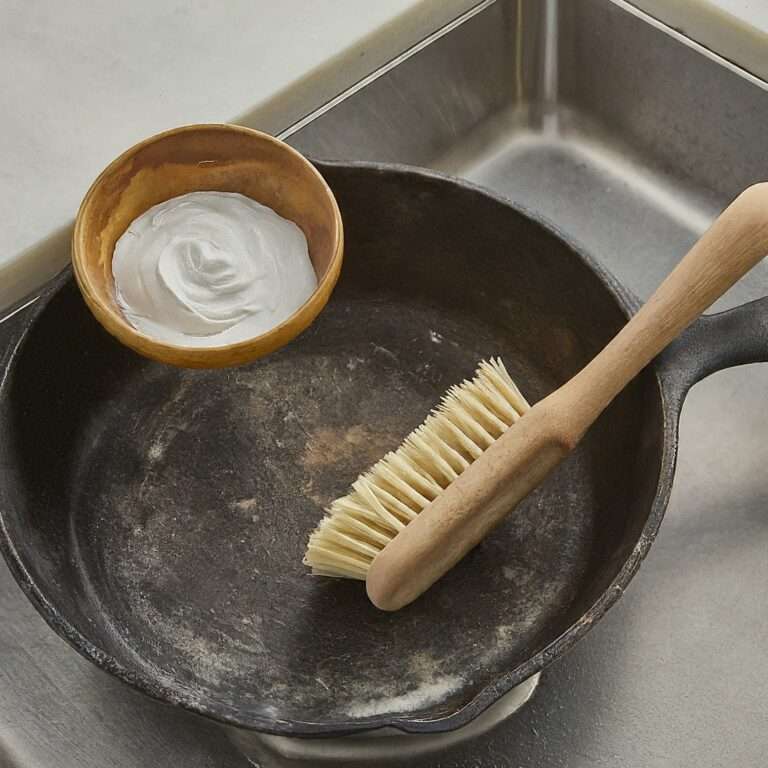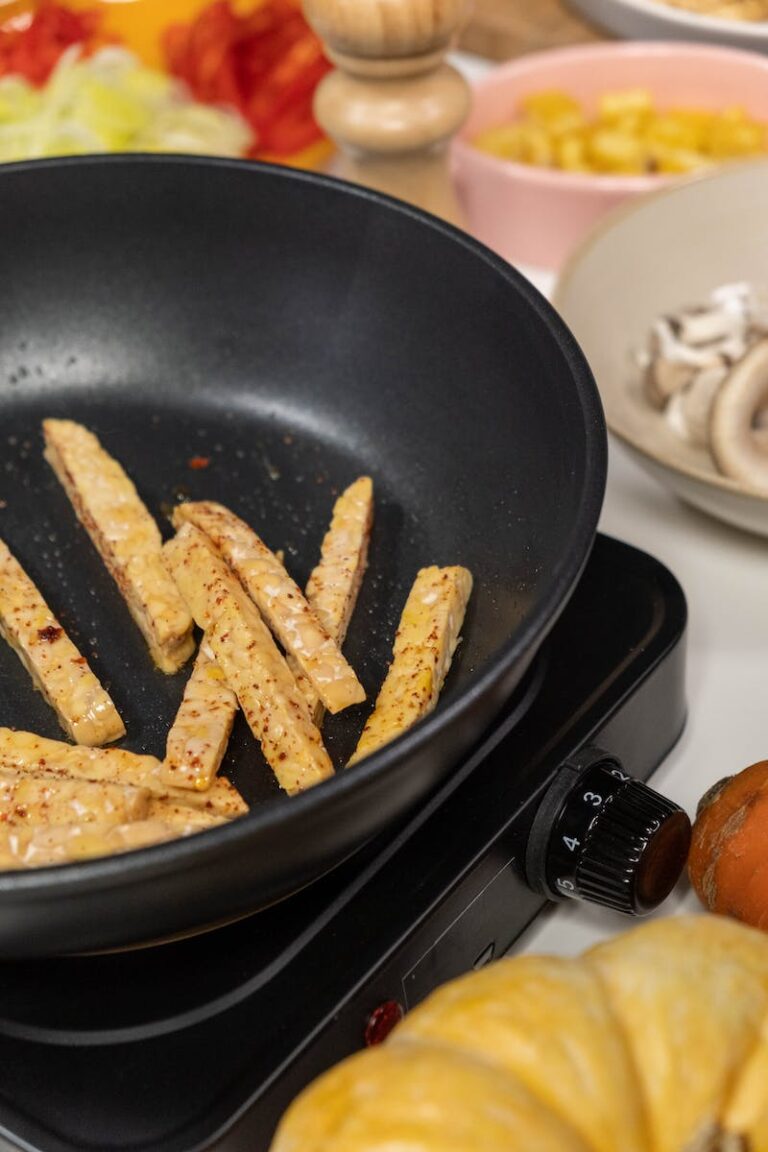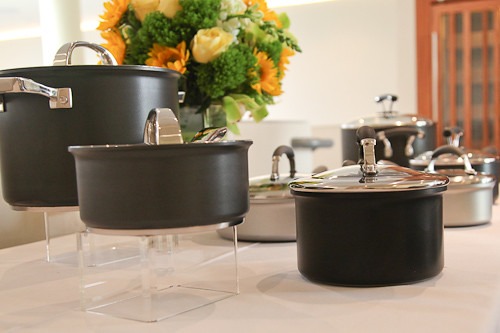Are you curious about whether cast iron pans are non-toxic?
Look no further! In this article, we will delve into the composition of cast iron pans and explore their potential health benefits.
Say goodbye to worries about harmful chemicals in traditional non-stick cookware and discover the truth about using cast iron for safe and effective cooking.
Plus, we’ll debunk common myths and provide tips on how to season and care for your cast iron pan.
Let’s get started!
Key Takeaways
- Cast iron pans do not release any harmful substances when heated.
- Using cast iron pans can increase the iron content in food, benefiting those with low iron levels.
- Cast iron pans are durable and can withstand high heat without warping or scratching.
- Proper care and maintenance can keep cast iron pans in good condition and they can last for generations.
Understanding Cast Iron Pans and Their Composition
Do you know that cast iron pans are made up of a combination of iron and carbon?
These versatile kitchen tools have been used for centuries due to their durability and heat retention properties.
The process of making cast iron pans involves melting iron, adding carbon, and pouring the mixture into molds.
This composition gives the pans their unique characteristics. The high iron content makes them incredibly sturdy, while the carbon adds strength and improves heat distribution.
Furthermore, this combination allows for even cooking and browning of food, making cast iron pans ideal for searing meats or baking delicious cornbread.
The Potential Health Risks of Traditional Non-Stick Cookware
The potential health risks of traditional non-stick cookware can be concerning for some people. When heated, these types of pans release toxic fumes that have been linked to various health issues. The chemicals used in the production of non-stick coatings, such as perfluorooctanoic acid (PFOA), have been associated with hormone disruption, reproductive problems, and even certain types of cancer. To help you understand the potential risks better, here is a comparison between traditional non-stick cookware and cast iron pans:
| Non-Stick Cookware | Cast Iron Pans |
|---|---|
| Releases toxic fumes when heated | Does not release any harmful substances |
| Requires special care to prevent scratching the non-stick coating | Built to last and withstand high heat |
| Coating can wear off over time | Develops natural seasoning that enhances flavor |
Considering these factors, it’s no wonder why many people are opting for cast iron pans as a safer alternative for their cooking needs.
Exploring the Non-Toxic Benefits of Cast Iron Pans
Exploring the benefits of cast iron pans, many people are choosing them as a safer option for cooking. Here’s why:
- Durability: Cast iron pans are built to last and can withstand high heat without warping or scratching.
- Even Heat Distribution: Unlike non-stick cookware, cast iron pans distribute heat evenly across the surface, allowing for better cooking results.
- Chemical-Free Cooking: Traditional non-stick coatings often contain harmful chemicals that can leach into your food. With cast iron pans, you don’t have to worry about any toxic substances.
- Nutritional Value: Using cast iron pans can actually increase the iron content in your food, which is beneficial for those with anemia or low iron levels.
Debunking Common Myths About Cast Iron Pans
Don’t believe the myths! Cast iron pans are actually easy to clean and maintain with proper care.
Contrary to popular belief, you don’t need to avoid using soap when cleaning your cast iron pan. A little bit of mild dish soap is perfectly fine and won’t ruin the seasoning.
Simply scrub it gently with a soft sponge or brush, rinse it thoroughly, and dry it immediately to prevent rusting.
Another myth is that you can’t cook acidic foods in cast iron. While prolonged exposure to highly acidic foods like tomatoes may strip off some of the seasoning, occasional use won’t harm your pan.
Just make sure to re-season it afterwards by applying a thin layer of oil and heating it on low heat for a few minutes.
With proper care, your cast iron pan will last for generations!
How to Season and Care for Your Cast Iron Pan
When it comes to properly seasoning your cast iron pan, there are a few key techniques you should know.
First, make sure to use a high smoke point oil like vegetable or canola oil and evenly coat the entire surface of the pan.
Second, preheat your oven to a high temperature and place the pan upside down on the middle rack for about an hour.
Lastly, repeat this process a few times to build up a strong seasoning layer that will help prevent food from sticking.
As for cleaning and maintenance, avoid using soap as it can strip away the seasoning. Instead, use hot water and a stiff brush or sponge to remove any food particles.
After washing, dry thoroughly with a towel or by placing it back in the oven on low heat for a few minutes to ensure all moisture is gone.
Proper Seasoning Techniques
Properly seasoning your cast iron pan is the key to maintaining its nonstick surface. When done correctly, it creates a protective layer that prevents food from sticking and adds flavor to your dishes.
To ensure you get the most out of your cast iron pan, follow these simple steps:
- Preheat your oven to 350°F.
- Apply a thin layer of oil all over the pan, including the handle.
- Place the pan upside down on the middle rack of the oven.
- Bake for one hour and then turn off the heat, leaving the pan in the oven until it cools completely.
By following these seasoning techniques, you’ll not only preserve your cast iron pan’s nonstick properties but also enhance its durability and longevity.
Cleaning and Maintenance Tips
To keep your cast iron pan in top condition, it’s important to regularly clean and maintain it.
After each use, rinse the pan with hot water and scrub lightly using a soft brush or sponge. Avoid using soap as it can strip away the seasoning. Instead, rely on gentle abrasives like salt or baking soda to remove stubborn residue.
Once clean, dry the pan thoroughly to prevent rusting. To maintain its non-stick surface, apply a thin layer of oil after each use. Heat the pan until slightly smoking and then wipe off any excess oil with a paper towel.
Store your cast iron pan in a cool, dry place to avoid moisture buildup.
Tips for Cooking Safely and Effectively With Cast Iron Pans
If you’re new to cooking with cast iron pans, it’s important to season them before use. Seasoning creates a non-stick surface and enhances the flavor of your food. Here are some tips to help you cook safely and effectively with cast iron pans:
- Preheat your pan: Heating the pan before adding food helps prevent sticking.
- Use oil or fat: Adding a small amount of oil or fat helps create a natural non-stick surface.
- Avoid acidic foods: Acidic ingredients can strip away the seasoning, so it’s best to avoid cooking highly acidic dishes in cast iron pans.
- Clean gently: To preserve the seasoning, avoid using harsh detergents or scrubbing pads. Instead, wash with warm water and gentle soap.
By following these tips, you’ll be able to enjoy delicious meals cooked perfectly in your seasoned cast iron pan.
Alternatives to Cast Iron Pans for Non-Toxic Cooking
For a safer cooking option, consider exploring different types of cookware that are non-toxic and provide similar results to cast iron. While cast iron pans are known for their durability and heat retention, they can leach small amounts of iron into your food, which may be harmful if consumed in excess. To avoid this, you can opt for alternative cookware options that offer similar benefits without the risk of toxicity.
| Cookware Type | Benefits | Drawbacks |
|---|---|---|
| Stainless Steel | Durable, easy to clean | Poor heat distribution |
| Ceramic | Non-stick surface, retains heat well | Fragile, requires careful handling |
| Enameled Cast Iron | Retains heat like cast iron, non-reactive surface | Expensive |
Conclusion
In conclusion, cast iron pans are indeed non-toxic and offer numerous benefits for safe and effective cooking.
By understanding their composition and debunking common myths, you can confidently use them in your kitchen.
Seasoning and proper care are essential to maintain their non-stick properties.
With a little practice, you’ll be able to cook delicious meals without worrying about harmful chemicals leaching into your food.
So go ahead, grab that cast iron pan and start cooking with confidence!



